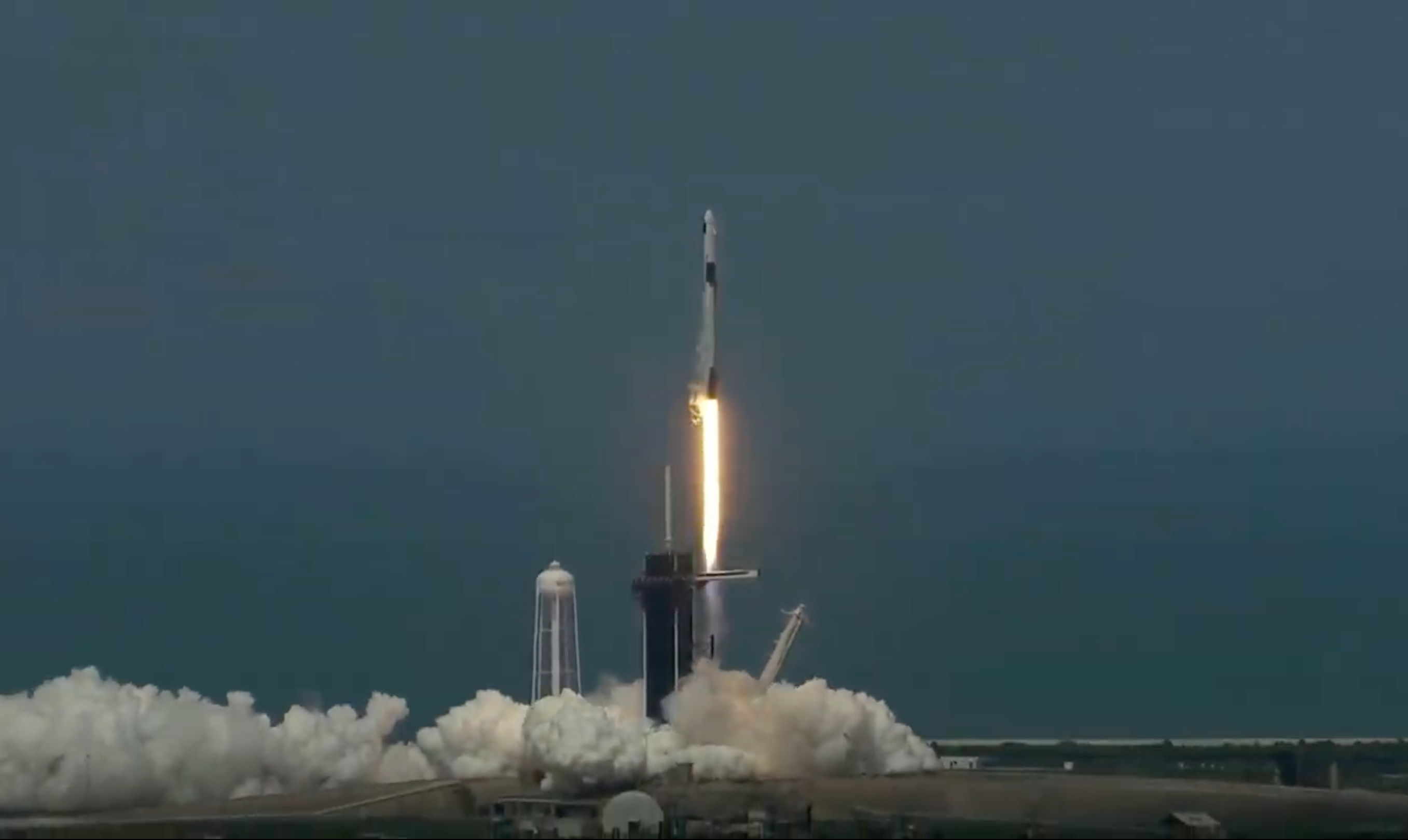NASA astronauts just flew SpaceX’s Crew Dragon into orbit for the first time

This post has been updated.
What happened: A SpaceX Falcon 9 rocket carrying Crew Dragon was launched at 3:22 p.m. US Eastern Time from Kennedy Space Center. The Falcon 9 successfully deployed the vehicle into orbit before returning back to Earth and landing on SpaceX’s Atlantic Ocean drone ship. NASA astronauts Bob Behnken and Doug Hurley are aboard Crew Dragon and will rendezvous with the ISS at around 10:29 a.m. Eastern Time on Sunday.
The mission, called Demo-2, was originally set to fly Wednesday before bad weather forced officials to scrub the launch. Luckily, Saturday provided clearer skies and smoother winds.
Weaning the US off Russia: Demo-2 is the first crewed flight test of the Crew Dragon, and a successful launch and docking with the ISS ensures that the spacecraft is certified for regular NASA astronaut missions in the future.
Since the space shuttle program was shuttered in 2011, NASA has paid Russia billions of dollars to take its astronauts to the ISS. Crew Dragon’s certification means NASA now has an American vehicle it can use instead and is no longer tied to Russia to meet its human spaceflight needs.
A milestone for commercial space: Demo-2 marks the first time in its 18-year history that SpaceX has sent humans into space. The company has bullishly pursued reusable architecture as a way to cut down the cost of missions, and the use of a reusable rocket with a reusable vehicle for a crewed mission opens up more possibilities for sending astronauts and private citizens into space for less money.
The mission also marks the first time a private company has pulled off a crewed mission into low Earth orbit. NASA administrator Jim Bridenstine has repeatedly said in the past that the agency wants to see low Earth orbit become commercialized, and turning over such operations to the private sector is a central part of those plans. Interested customers like NASA could now turn to SpaceX as an option for going into orbit, and Bridenstine told reporters after launch that Demo-2 shows this is "a successful business model."
SpaceX, for its part, has its sights set beyond Earth's orbit. "This is hopefully the first step on a journey towards a civilization on Mars," SpaceX CEO Elon Musk told reporters, referring to the company's work on Starship. "That's getting increasingly real after what happened today."
What’s next: Behnken and Hurley’s stay on the station could last anywhere from 30 to 119 days; NASA will decide on the exact duration at a later time. At the end of their mission they will take Crew Dragon back down to Earth. Meanwhile, SpaceX will be following up Demo-2 with Crew-1, the first formally operational flight of Crew Dragon. The mission, expected to happen in late August, will take three NASA astronauts and one Japanese astronaut up to the ISS.
Deep Dive
Space
How to safely watch and photograph the total solar eclipse
The solar eclipse this Monday, April 8, will be visible to millions. Here’s how to make the most of your experience.
How scientists are using quantum squeezing to push the limits of their sensors
Fuzziness may rule the quantum realm, but it can be manipulated to our advantage.
The race to fix space-weather forecasting before next big solar storm hits
Solar activity can knock satellites off track, raising the risk of collisions. Scientists are hoping improved atmospheric models will help.
Stay connected
Get the latest updates from
MIT Technology Review
Discover special offers, top stories, upcoming events, and more.